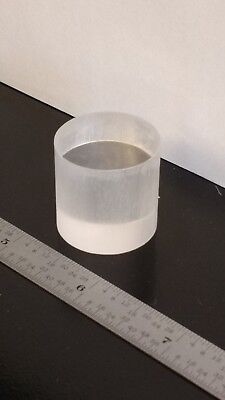I suppose this idea deserves at least a lash-up experiment. I have two Americium sources, and I can expect to posses another six soon. I will get hold of a PMT tube + scintillator, either as separates, or as a unit.
I am assuming the PMT tubes used for night vision goggles are unsuitable because they don't let you collect the electron output to an amplifier, instead expending the energy onto a green (zinc sulphide) screen. The other has a fibre-optic bundle intended to couple to aCCD chip. A pity, because that one could see down to 1/12 starlight, and the image of a person in a field would be as speckles of arriving photons, becoming more high resolution as the light level increased.
It would help if I get a little walk-through.
I tried to check out
NIST Atomic Spectra Database
I went for "Lines", and typed in "Fe" and pressed return. After about 10 seconds pause, we get the first page of 29609 lines, and I can hear the PC fan revving up as all 4 cores go from 44C to around 60C.
On the way, I see "Levels" and more, and my eye is drawn to "ASD Interface for Laser Induced Breakdown Spectroscopy" (LIBS), but we leave that for now.
I try "Na", hoping to see something of the two bright yellow lines at 589nm and 589.6nm. They are there, but you search a long way down through 7383 lines. I am guessing the numbers are about every possible energy transition between every energy "shell" and all its electron quantum spin states, and only a few would be provoked from a shot of Americium-origin energy.
So start with the energy from one of the smoke detector best shots..
1) It hits the iron, and electrons energy states get yanked about, and settle down, giving back the energy as a photon of a new discrete quantized amount, or amounts, depending on how many electrons got jangled, and by how far.
Let us gloss over what happened to the remainder that did not make the cut (among quanta).
Perhaps we get back a whole bunch of quantized energies.
2) So find out one of these, and divide by Planck's Constant, and also the speed of light, to get at the wavelength.
This wavelength is the characteristic of the iron - it's fingerprint. Also, the amount of energy in it is also such a fingerprint, locked together by the constant-ness of Planck's Constant.
3) This exit photon (might even be X-Ray) hits the scintillator material.
Let us gloss over what happens there, other than to say that the scintillator responds with a feeble flash of (visible light, or not?), but it's own photons anyway. The flash intensity is proportional to the Fe spectrum photon, so we still have a grip on it being iron.
4) These iron-sized photons have to make it through the (thin) glass window of the PMT, and hit a new material, which exhibits the photoelectric effect. Let us here not explore wave-particle duality, nor stay with the photons. It's OK to say we end up with electrons, because that is what photoelectric material does.
These electrons are hopefully proportional to the arrived photon, though possibly only a few because of low efficiency.
5) The PMT multiplier multiplies - by several hundred thousand to a million, but still proportional.
We end up with a pulse of current - the size still related to the fact it came from a smoke-detector -abused iron atom. There are more, thousands of them, all the same strength that labels them as iron.
6) In between, there are thousands more, but they are of different strengths. They would be the nickel, or cobaly, or magnesium sized flashes, They arrive at various times, sometimes right on top of the iron flashes, or each other, but in general, they have drop-out delays characteristic of their electron energy states.
7) In the end, if you display the strength of the pulses that arrive, and display them positioned on a X-Axis such that the higher the energy, the smaller the value, related by Plancks Constant, and the speed of light, you get a signature spectrum for the material. On this last point, I took it from
@homebrewed post#15 that this is how the height of the pulse, and the wavelength are related, and so therefore may be displayed.
Posts have happened while I have been writing - apologies if I missed something . Having struck out on the NIST site, I have resorted to Kaye & Laby 14th edition, which I
know RJ has likely cussed at at some stage of his life. I just wanted to figure the wavelengths of what the scintillator was supposed to be responding to.
Remembering that we want cheap + cheerful here. We only need to be able to see enough of the elements content, and rough proportions to be able to zero in on the steel. Come to that - the app can do that for us.


